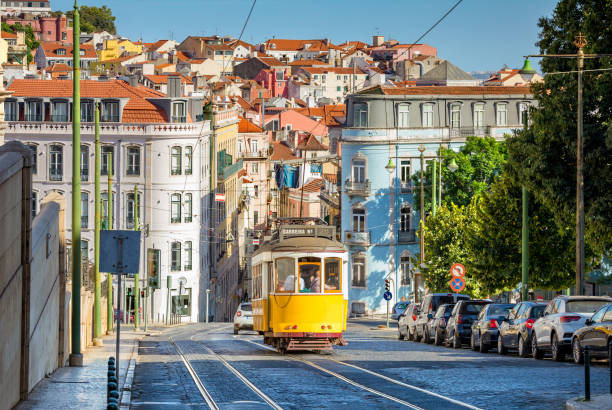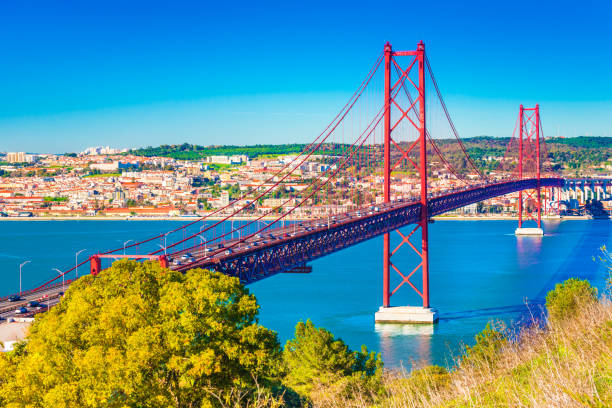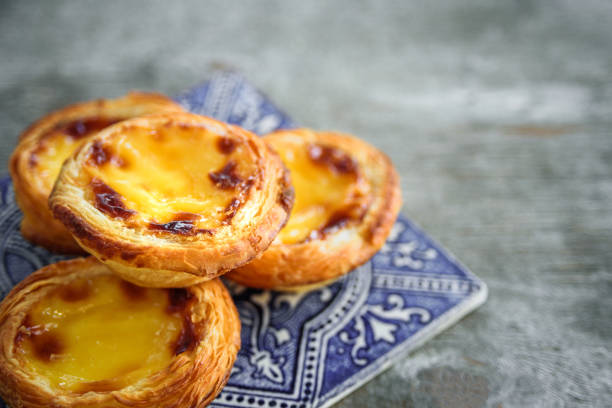South Africans are known to be great fans of Portuguese food and many visitors to Lisbon will think they’ve died and gone to gastronomic heaven.

Lisbon, Portugal. Picture: iStock
For a city lacking in WOW!- scale tourist attractions (for example Barcelona, Rome, Florence or Athens), Lisbon is surprisingly popular and ranks among the most visited destinations in southern Europe with some 30 million passengers passing annually through Humberto Delgado Airport.
While large numbers of people travel to Lisbon each year for business – it’s a major manufacturing, finance and technology hub as well as one of the busiest container seaports on the continent – about 4.5 million visitors go to the Portuguese capital on holiday.
Lisbon has always been a working city yet it is a surprisingly beautiful one, something that attests to the wealth, taste and industry of its rulers and residents down the centuries. It owes that wealth primarily to the sea and the city celebrates its place in seafaring history at every turn.
Certainly, visitors are almost continuously bombarded with references to Vasco da Gama, the navigator who sailed around the Cape of Good Hope in 1498 on his way to opening the sea route from Europe to India. The voyage led to Portugal’s control of the fabulously wealthy Indian Ocean spice route.
Pedro Alvares Cabral “discovered” Brazil and claimed the territory for Portugal in 1500 while, two decades later, Ferdinand Magellan left Lisbon in 1519 to lead the first circumnavigation of the globe (he died before the voyage’s completion in 1522). As a result of these voyages of discovery, Portu – gal became a maritime superpower with Lisbon at its heart.
While Lisbon has retained a lot of its commercial dynamism, life is anything but a hither-and-yon scurry for the Euro. The city is affordable and its citizens are surprisingly relaxed considering the vast quantities of industrial-strength coffee they consume.

Belem Tower on the Tagus River in Lisbon, Portugal. Picture: iStock
1) Noon: Out of the starting blocks
Lisbon taxi drivers are not noted for their probity and new arrivals at Humberto Delgado will be left with a better taste in their mouths if they dive straight in to the public transport system.
The airport is in the city and lies on the Red Line (Linha Vermelha) of the Lisbon Metro which is cheap, clean, easy-to-use and efficient. The line runs through areas where most of the reputable hotels are located and the capable people staffing the tourist information desk at the airport are usually spot-on providing advice on where to disembark and which way to walk to your place of accommodation.
Heed their advice: asking for directions on the street will, more often than not, be a fruitless and frustrating experience.
Learning English does not seem to be a priority anywhere on the Iberian Peninsula. Nonetheless, 20 minutes spent familiarising yourself with the Lisbon Metro will make getting around over the next 36 hours an absolute cinch.

Tram in Lisbon, Portugal. Picture: iStock
2) 3pm-7pm: Parque de Naçðes & sundowner cruise on the Tagus
The River Tagus (locals call it Rio Tejo) is to natives of Lisbon what the Thames and Seine are to Londoners and Parisians respectively; a sideshow to life. For tourists, however, it is one of the main attractions of the city.
The Tagus splits the capital in two and is spanned at its mouth by the Ponte 25 de Abril (inspired by San Francisco’s Golden Gate bridge) and at its broadest part by the Vasco da Gama bridge which, at 17km, is the longest in Europe.
Between the two is the contemporary Parque de Naçðes – Park of Nations – built as part of a major urban renewal programme to host the 1998 World Exhibition. The precinct has since evolved to include high-end residential and commercial components in addition to exhibition areas, restaurants and bars, a 20,000-seater concert venue, casino, gardens and aquarium.
In the middle is the Vasco da Gama Tower, the highest structure in Lisbon. Sundowner cruises are an excellent and time-effective way of getting one’s bearings. Sitting on the deck of a yacht, sipping wine under the benign gaze of a 28m statue of Christ with outstretched arms (Cristo Rei) is also perfect for de-stressing from air-travel and planning the evening meal.
Parque de Naçðes is at the Oriente end of the Linha Vermelha.

Ponte 25 de Abril in Lisbon, Portugal. Picture: iStock
3) 8pm: Dinner: traditional Portuguese or South American-style grill?
South Africans, especially those from Gauteng and the Western Cape, are known to be great fans of Portuguese food and many visitors to Lisbon will think they’ve died and gone to gastronomic heaven.
According to the Eyewitness Travel guide to the city, “eating venues in Lisbon come in all shapes and sizes, and at all price levels.
“Among the most reasonable is the local tasca or tavern, often just a room with half-a-dozen tables presided over by a husband-and-wife team.
“Tascas are often frequented by locals and professionals … which is a good indication of quality food.”
Portugal has the highest per capita consumption of seafood in Europe and Lisbon’s status as a leading fishing port means “catch of the day” is just that, with freshness matched by variety.
One seafood dish especially worth ordering is caldeirada, a stew comprising a variety of fish and shellfish with potatoes, tomatoes, bell peppers, onions, garlic and parsley.
Given Lisbon’s historic links with Asia, it’s not surprising that spicing is integral to Portuguese cuisine. The most commonly used spices are piri piri, paprika, cinnamon, garlic, bay leaf and white pepper some of which are used in combination to make wine and olive oil-based marinades for meat dishes (prego steaks, trinchado, etc).
The South American influence – mainly through Portugal’s colonisation of Brazil – makes itself felt in the form of churrasqueira, restaurants specialising in spit-roasted meats.

Caldeirada. Picture: iStock
4) Fado – an acquired taste (dinner till dawn)
Fado (“Fate”) is known as the music of Lisbon, the name applying to individual songs as well as the genre. It originated in backstreet bars 150 years ago and is regarded as the Portuguese equivalent of the Mississippi blues.
A fado trio comprises a male or female singer accompanied by guitarra (shaped like a mandolin with eight, 10 or 12 strings) and viola (an acoustic Spanish guitar).
The songs are expressions of longing and sorrow, and a night spent listening to fado is almost invariably followed by a hangover.
5) 10pm-midnight: Post-prandial stroll through Rossio and Baixa
Lisbon lends itself to on-foot exploration and a more uplifting way of working off the evening meal is taking a late night walk (violent crimes such as muggings are rare) through the historical districts.
The climate is typically Mediterranean, which means summer evenings are generally balmy while winter nights are crisp rather than frigid.
King Pedro IV Square, known as the Rossio, is at the centre of Baixa – Lisbon’s “lower town” – and has seen many uses over the centuries. These range from burning heretics during the Inquisition to bullfights, political rallies and military parades.
Now it’s a meeting place for theatregoers, tourists, families (there’s a public ice-rink during winter) and late night shoppers at high-end boutiques.
Most of the historical buildings and monuments are spotlit. These, combined with pedestrian and traffic bustle, creates a magical atmosphere. Have a nightcap before heading back to your hotel. The last Metro trains depart at 1am.

King Pedro IV Square in Lisbon, Portugal. Picture: iStock
6) Pastelarias
There’s no point getting up early to “make” breakfast at the hotel. The trains start running at 6.30am and, if you’re visiting during summer, you don’t want to waste the daylight hours.
The ubiquitous pastelaria is so much more than a pastry shop. It is a bakery and confectioner with the added elements of delicatessen, café and, in residential areas, local grocer. It’s where Lisbon gathers in the morning to grab a bite and a bica (espresso) on the way to work or a beer or glass of wine before returning home.
You can’t leave Lisbon without consuming at least one pastel de nata, a custard tart dusted with cinnamon. Order a filled Portuguese roll (or two) to munch while you’re sightseeing.

Pastel de nata. Picture: iStock
7) Praça do Comércio
Lisbon is the second oldest European capital after Athens (yes, it’s older than Rome) but there’s a dearth of ruins such as the Parthenon or Coliseum. This is because the city was largely destroyed by an earthquake that was followed by a tsunami in 1755 and “historic” architecture postdates the cataclysm.
The “Square of Commerce” was built in Baixa on the banks of the Tagus to house government agencies regulating port activities and, simultaneously, celebrate the city’s heritage. At the centre of the square is a verdigris statue of King Jose I (looking more like a dyspeptic Queen Victoria) astride a horse trampling a nest of snakes.
Much more impressive is the triumphal arch at the entrance to the square. It features a statue of Vasco da Gama.
For more news your way, download The Citizen’s app for iOS and Android.





